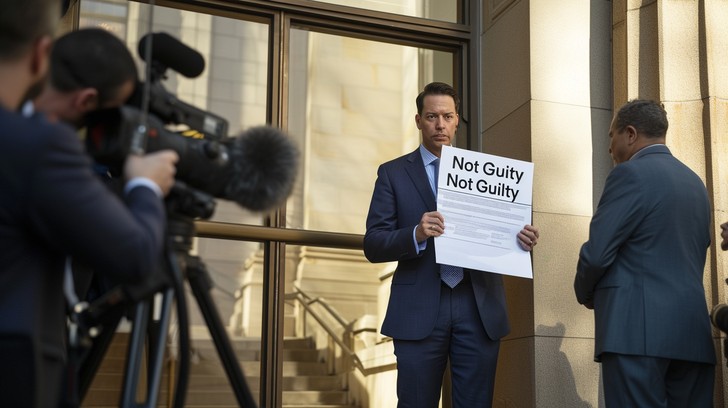Now Reading: Cyber Torts
-
01
Cyber Torts

Cyber Torts
Abstract
Cyber torts are a somewhat recent term and has seen no formal research relative to other, established branches of law. We have moved the cyber-age, however, and the legislation is failing on all fronts to keep up with technical changes in cyberspace. This thesis aims at a potential definition and concept of cyber damage and how a statute that discusses existing and evolving problems of cyberspace will potentially be created and understood. While there is a growing understanding of the existence and complexities of cyber-crime, there is a shortage of a significant body of academic contributions to the debate. In fact, the emphasis is not necessarily on the ideology, philosophy and research, but on the realistic dimensions of cyber-crime.
INTRODUCTION
With the advent of computers and the introduction of the internet, a new form of injury has arisen, i.e. cyber abuse, and are carried out in different forms, as described in this article later, yet virtual devices such as a computer and cell phone or any system that can access the web or the cha are still the tool used.
Technology torts are the newest and undoubtedly complex technology challenge in the world.’ Cyber torts can be assumed to be such organisms, of which the typical torts are category and where either the machine is the victim or the target of the felony of the behavior.’ The general concept of cyber-crime can be “lawful actions in which a computer is a weapon, or a target, or the two,” “any illegal behavior involving a computer as a medium for perpetuating more crimes” The machine can be used as a weapon in financial offences, the selling of papers unlawful, prostitution, internet gaming, offenses against intellectual property, e-mail Spoofing. In the following instances, the device may be subjected through criminal activities-unlawful access to IT / computer networks, stealing of electronic records, email bombing, code dialing, salami attacks, explosives, Trojan attacks, site jacking, computer system fraud, physically destroying computer systems Security Stealing of Computer Systems Fraud.
LAW OF TORTS
Torture shall be a civil wrong, whereby compensation is granted in relation to injury or loss due to the complainant (the party who causes the injury by takes the case before the courts) in respect of unliquidated damages to the defendant (those for which the applicant is not liable) (the one who does the harm and must show his innocence in courts)
The term “tort” is extracted from the French language, in English the term “fake,” originated from the Latin word “tortum,” which means “erroneous or hurt,” and the words “torquere” which means “to twist.” The word “tortum” falls from the English language. It is clearly a breach of law, a legal error.
A torturer is considered an entity and, where several individuals are involved, a collective torturer is designated because they are collectively responsible for the torture act and may be charged either separately or collectively.
BIRTH OF INTERNET LITIGATION
The Internet coming from the United States The US vs. Morris26 is the first ruling on the website. The candidate was a university student who unleashed an internet worm that crippled thousands of U.S. and military machines26. Robert Ri was built the same year to link machines to various radio and satellite networks by AR Panet Defense Department. The secret information was eventually published in a newsletter concerning hackers.
Every defendant won only in 1994 in an internet abuse trial. An anthropologist was disqualified in a landmark ruling at the University of Western Australia in Rindos v. Hardwick. The anthropologist Hardwick also released a declaration in support of Rindos’ judgment of sexual abnormality in Australia.3 The Australian court decided that this was the first claim for damages of an Internet abuse case, although the vast overwhelming amount of the web-based crimes that occurred in America have been litigated. The Australian court also stated that Rondos had been prosecuted. In the past 10 years US laws on fraud, spamming and Site infringements have been created to tackle online harm, e-mail abuse site.
DISTINCTION BETWEEN CONVENTIONAL AND CYBER TORT
Cyber and modern damage are evidently no different. However, in a thorough analysis we might conclude that there is a fine demarcation, which is important, between traditional and cyber-torture. In the case of cybercrime, the demarcation consists of the participation of the medium. The requirement is that the interactive computer platform i.e. should be active at all times Space cyber.
Reasons for the Phenomenon of Cyber Tort: “Human beings are sensitive to their rule of law so that it is necessary to protect them” Hart in his research “The Law Principle.”
When this is extended to the Internet, we may argue that machines are fragile, so that the rule of law needs to protect against cyber-causing damage. The explanations why machines are weak are as follows:
- Capability to store information in relatively small spaces-the device has a unique feature of data storage in a very small area. It makes it much easier to erase or obtain information through physical or virtual media.
- Easy Access The difficulty with protecting an illegal access to the computer network is that there is no violation, not because of a human error, but because of a complex technology. Using a hidden logic bomb, you can use key loggers that capture access codes, sophisticated voice recorders, retina imagers, etc. that trick biometric systems and circumvent firewalls to escape other security
- Complexity of the Networks-Operating systems operate in machines and millions of software in effect are made of these operating systems. The human spirit is fallible and there should be no mistake at all stages. You will take advantage of these lacunas and infiltrate device protection networks.
- Negligence- Failure is closely linked to human behavior. Therefore, it is very possible that there may be neglect when securing the computer system, which in essence creates potential space for exposure to and power and misuses the data system as a result.
- Proof loss- Evidence loses are a very normal and apparent issue as all evidence is regularly destroyed as it is changed each This system is also crippled by further data collection outside the territorial reach investigation.
MANNER OF COMMITTING CYBER TORT
- Unauthorized access of operating systems or networks / interference- Commonly defined as interference. The term ‘unauthorized access’ is also broader than the word ‘hacking’.
- However, this expression has not been applied in reference to the Information Technology Act Misuse of electronic data – from hard disk recordings, compact disks, disquettes and flash-drive devices, etc. Misuse of electronic information. Stealing can be achieved through the real stealing, misappropriation or digital media.
- This type of operation ensures that a receiver will accept an enormous amount of mail which may eventually crash on a certain single person or organization or even on a mail server.
- Software Diddling – This type of attack allows raw information to be modified before a computer is used for detection and modification when operation is halted. Throughout the infrastructure computerization, the Electricity Board had serious issues with data
- Salami Attacks- Usually this type of crime is committed in banks or financial institutions. One of the major advantages of this form of crime is that it is so minor that it is generally missed. For example, In Ziegler, where the financial structure has taken out logic, 10 percent of all revenues are withdrawn and allocated to a particular
- Service refusal-the victim’s computer wants more than it can handle, which causes it to The DS is a type of service denial sometimes involving a broad and typical number of perpetrators. The Denial of Service Attack (DDOS) For examples. Amazon, Yahoo. Yahoo.
- Virus / worm attacks — Virus applications are applications that link a system or file to other internet software and computers. In fact, the data on a computer is influenced by alteration or Unlike viruses, Worms need not host themselves. Worms do not. Worms do not. You just repeat and do that again until you take all the available room on a memory on your machine. For examples, love bug virus affects 5% or more of computers worldwide. There were damages of $10 million. The most common worm in the world, which was introduced in 1988 was Robert Morris’ Internet worm, which had almost entirely stopped the growth of the internet.
- Logical explosives- increasing structures are focused on This indicates that such processes only exist if such incidents (called cause cases) exist. Of e.g., even certain virus’s may be called rational explosives as they sleep year-round. (such as the Chernobyl virus).
- Trojan attacks – The name ‘Trojan horse’ derived from this phrase. In software that is an illegal application, which is automatically regulated by having an approved application over certain programs. E-mail is the most popular way to mount a Trojan. For e.g., while talking, a Trojan was mounted on a lady film director’s machine in the USA. The cyber thief accessed her naked images from the web cam mounted on the device. He insulted the lady ever more.
- Theft of Internet time – usually in these criminals another person utilizes the internet surf hours of the perpetrator. The access to the login ID and password is provided. For examples. The Internet hours is used by everyone else through Colonel Bajwa’s event. Maybe this was one of India’s first recorded cyber-crime incidents. The police were not informed of the existence of cyber-crime, however. This event was not well documented.
The word “internet jacking” is a hi jacking phrase. In these offences, the intruder assumes exposure and influence of another’s website. He can also mutilate or alter the website content. This can be done for political purposes or income. For e.g., its site has been hacked by Pakistani hackers recently in the MIT case (Ministry of Information Technology) and some obscene matter has been released. In fact, web-jacked were also on the platform of the Bombay police division. The ‘Black Fish Case’ is another example of site jacking. In this situation, the platform was compromised and gold fish data is changed. In fact, a $1 million ransom was demanded. Web jacking is therefore a phase in which some attention is granted to accessing another’s website it.
WHO ARE GENERALLY CYBER CRIMINALS
Cyber offenders are classified in various classes / divisions.
Such distinction should be explained by the thing they have. It’s the break. The group of cyber-criminals, children and young people aged 6-18 years – It’s mainly because we have an interest in knowing and finding things that is the reason behind this type of crime. Another academic theory is that your school has excellent many students. Social causes can actually be equal. The case of Bal Bharati (Delhi), for example, was the product of the abuse of his friend’s criminals.
Organized hackers-These hackers are mostly organized for certain purposes. Their political prejudice, fundamentalism etc. could be achieved. It was recently targeted against the Indian Government. The hackers continue to attack both the NASA and Microsoft sites.
Professional hackers – the color of the money drives their work. These hackers are primarily used to access rivals’ websites and get trustworthy, secure and valuable information. In fact, they are used to smash the employer’s network primarily in order to make the lapses better.
BROAD CLASSIFICATION OF CYBER TORT
- The harassment with e-mail anti-E-mail is not a new idea. It’s a ton like misuse in mail. Recently I got a mail from a lady moaning. Her former boyfriend sent her occasionally threatening and gripping letters. E-mails are very common in this form of harassment.
- Cyber bullying involves the targeting of users on the internet through feedback (some threats) on regular posts of the victim, exposure to the chat rooms of the victim, constant harassment of the victim via e-mail, etc. 3. 3. Relevant pornography /individual pornography (mainly child pornography)/indecent contaminant exposure- Internet pornography take various forms. Net pornography The platform may be used to host these illegal content. To build these disgusting objects, computers are used. Website links to pornographic items. Those dark activities can kill the minds of the young person and start destroying or corrupting his spirit. Two well-known incidents of adultery include the case Delhi Bal Bharati and the case of Bombee, and two Swiss couples capture mysterious slum children. The Mumbai police arrested them
- Defamation: Someone who attempts to degrade or reject or deny or subject him to contempt, disdain and ludicrousness when assessing the legitimate representatives of community in general is charged with an offence. Defamation: Cyber defamation is no different from conventional defamation but for the inclusion of an electronic network. For e.g., the Rohit mail account was hacked and mails from the account of his girl-like affair to some of his batch mates with the intention of defeating him were sent out.
- Unauthorized ownership of / exposure to data systems: – Activity is widely called hacking. However, we are not associated with the words ‘unauthorized access’ and the phrase ‘hacking,’ because the word ‘unauthorized entry’ in the law used in 2000 is much wider than hacking, to eliminate any confusion.
- Electronic spoofing — It is believed that a spoofed email which distorts its origins is This indicates that the origin is distinct from the current one. Mr. Na’s name. The virus was recently sent to spoofed mails by Vijayashankar (naaví.org). Rajesh Manyar was arrested in Purdue University in Indiana because of his threat to detonate nuclear devices at college campuses. The alleged e-mail was sent from a student’s phone to the vice president for student services. However, the email should be sent from the wallet of Rajesh Manyar.
- Software Vandalism: – Vandalism intentionally involves the damage or harm to another’s goods. Software damage may also entail any physical harm caused to a person’s device. These activities may take the form of stealing or destroying physically a device, any portion of a machine or a periphery attached to a device.
- IP Violations / Pirated distribution: – Intellectual property is a collection of rights. Intellectual property. Any offense that completely or partially eliminates the plaintiff’s rights is a felony. The most common forms of misuse may be software pirating, copyright infringement, patent and service mark violation, code source fraud, etc. The Court of Hyderabad convicted three citizens to six months’ incarceration and 50,000 for a fine for unauthorized copying and selling of pirated software in its ruling on the country list.
- At this point, it is necessary to distinguish between cyber-terrorism and cyber-harm: cyber-terrorism against the government organization. Both are danger Nonetheless, distinction of these two steps is necessary. Generally, a cybercrime is local and has regional consequences, but international and domestic cyber threats are global issues. The most common form is a denial of service assaults, hate websites and dislike e- mails, computer network attacks, etc. Electronics professional hackers are using 512-bit coding that is almost disabled. During Iraq War, Osama Bin Laden, LTTE, was the most recent example of an attempt on the US army deployment network.
- In order to promote financial, cultural, theological, policy or related purposes, cyber terrorism may be considered as “premeditated use of, or danger, in cyberspace, destructive acts with the aim of force or threaten other person for such purposes.” Another concept may include any acts of cyber terrorism within its scope. Jeopardizing the peace between the various religious, cultural, language or regional groups or classes or communities; or (2) jeopardizing any public or public area A terrorist means a person who indulges in deliberate killing or violent disturbance, or communicates significantly or destructively important to the company Every act is an act of cyber-terrorism.
- Trafficking: – There are growing ways of trafficking. It may involve drugs, men, guns, etc. The pseudonymisation of this type of trade is not monitored. A scam was attacked in Chennai that sold Honey Medicines Malware & Cheating: – Computer intrusion and malware is actually one of cyberspace’s best-selling companies. It may take different shapes.
- Internet fraud and manipulation, which are apparent in some situations, involves thefts of payment cards, contractual thefts, work supply, etc. Recently the Court of Metropolitan Magistrate Delhi (17) found guilty a 24-year-old engineer working in a call centre, of fraudulently gaining the details of Campa’s credit card and bought a television and a cordless phone from Sony website. Azim was arrested but was not jailed for trickers under the IPC by Metropolitan Judge Gulshan Kumar. The Rs 20,000 personally bond was then allowed to Azim and placed on probation for a
DISTINCTION BETWEEN CYBER CRIME AND CYBER TORT
There is a clear distinction between organized crime and organized offences that must be avoided if we think of non-criminal activities. Cybercrime consists of hack, illegal collection of files, cyber piracy, pirate program sharing, cyber bullying, posting of dark material on the site, hacking, indiscriminate disclosure of machines, computer viruses, internet intrusion, illegal contents, Cyber-stalking, data violations, cyber-obscenity and cyber defamation are also mentioned. There might also be features of both, although there are also variations between the two.
STATUTORY PROVISIONS
The resolution adopted at the General Assembly by the United Nations Trade Commission on Model Legislation on Online Transactions was deemed suitable for the Indian Parliament. The object of this Act was to legalize e-commerce and change the Indian Penal Code 1860, Indian Evidence Act 1872, Banker’s Book Proof Act 1891 and Indian Reserve Bank Act 1934. The IT Act 2000 was then enacted and adopted on 17 May. The underlying purpose of the amendment is to put the Act of 2000 into force. to track and control the virtual environment better affairs.
In specific Article 43 involves illegal entry, illegal transfer, attacks on viruses or other contaminant, harm done, interruption, denial of access, interfering with a person’s operation. This segment includes a penalty up to Rs. 1 Crore. Section 65 deals with ‘computer-source records’ and may be jailed for up to 3 years or punished up to 2 or both years. In Section 66, ‘information machine manipulation’ is dealt with and jail sentences of up to three years are imposed, or penalty, and may run up to two years or both. In addition, section 67 deals with the publication, up to 10 years, of obscene content and the penalty of Rs. 2 lakhs.
ADJUDICATION OF A CYBER TORTS
In compliance with a notification dated 25.03.03 released by the Central government in the High Court of Mumbai, the secretary of the IT department will be named by election as AO of each district state.
LIABILITY OF INTERMEDIARIES AND THE AUTHOR UNDER INDIAN LAW
The Internet has made the sharing of a massive amount of knowledge globally simpler than ever before. As previously mentioned, SNWs are a forum for knowledge sharing among people at the grassroots level.
SNWs require an individual on their own or a third party’s virtual profile to compose a comment, even a defamatory comment. The main problem in this case is whether or whether the individual about whom this defamatory allegation has been made will be charged.
Under Indian operational law, the individual, distributor and publishers who made such a statement may be held against. Aside from the author of the article, intermediaries including the SNW involved, the website owners, internet service providers and other SNW users whose accounts have been identified by the author as defamatory statements that be charged as publishers of defamatory statements and liable as such. It should be noted that such intermediaries or other SNW users may not be aware of the author’s own virtual defamation of such statements profile.
SECTION 79 OF THE INFORMATION TECHNOLOGY ACT, 2000
“Act” provides the network service providers with protection. In accordance with Article 79 of the Act, a “network service provider” (defined as an individual obtaining, processing, or distributing the electronic communications on behalf of another party) shall not be held responsible, in compliance with the Act or its rules, for information or data rendered available to third parties if the crime or violation is performed without the consent or approval of such an individual. contravention.
THE INFORMATION TECHNOLOGY AMENDMENT ACT, 2008
On 22 December 2008, the Indian Parliament passed the information technology reform Act, 2008 and from 5 February 2009 it became law following Presidential approval. The provision has some connection to the statute of the United States of America (‘USA’). Intermediaries such as SNWs, Internet service providers and other interactive web service providers in the USA shall be exempt from defamation liability if they I show no responsibility for the declaration or content; and (ii) immediately after receiving an annunciation from the plaintiff they remove that declaration or content from their web site or the network.
The process similar to the legislation in the US is provided for by revised Section 79 of this Amendment Act. The terms of the Information Technology Act (after the law comes into force) are as follows.
SECTION 79 – (1) Notwithstanding something that may be in effect under any other law but subject to the requirements of (2) and (3), any material, data or correspondence rendered accessible to third parties shall not be kept by an intermediary.
Sub-Section (1) arises whenever — (a) an intermediary function is limited to supplying other parties with control, while data is transmitted or momentarily stored; or (b) an intermediary may not initiate transmission; (ii) chooses a transmitter, and (ii) chooses a select transmission receiver or (ii) chooses a select transmission receiver. (3) Sub-Section (1) laws shall not extend to transmission receivers.
(4) Any other direction which the central government may recommend in this regard shall be followed by the intermediary.
Explanation — The term ‘third party information’ for the purpose of this section means any information.
Authored By:
SAPNA GULATI
Student of Law, Amity Law School, Noida, Amity University Uttar Pradesh
Disclaimer: This article has been published in Legal Desire International Journal on Law, ISSN 2347-3525 , Issue 22, Vol 7








